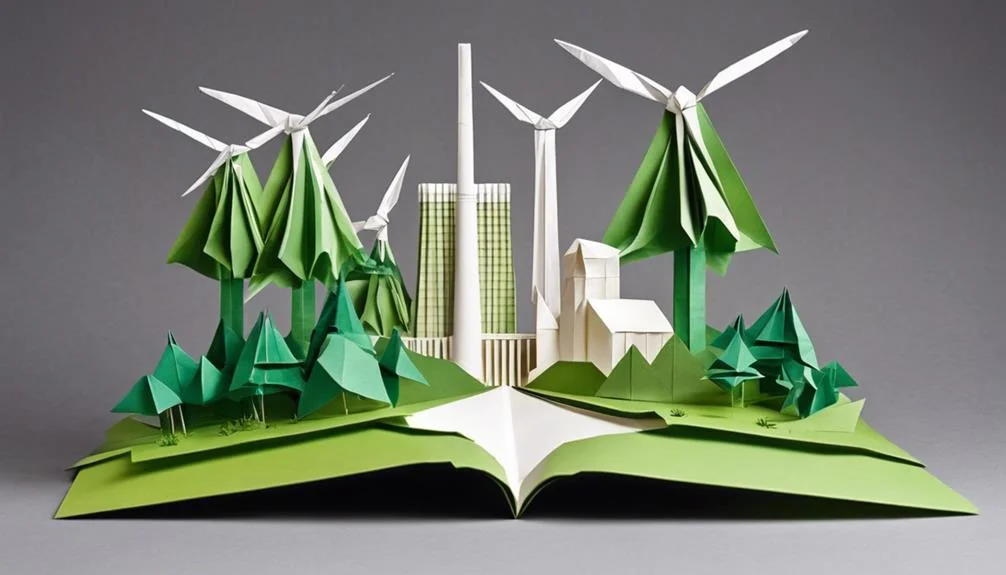The pros of nuclear energy are carbon-free electricity, reliable and low-cost energy source with high energy density, and minimal greenhouse emissions. Additional benefits include a small land footprint, high power output, stable base load energy, and sufficient fuel availability.
The cons of nuclear energy are expensive upfront costs, production of nuclear waste, and risk of catastrophic malfunctions. Other disadvantages include technically non-renewable uranium and a high environmental impact due to intensive water consumption.
Takeaways:
- Nuclear energy offers a low-carbon, reliable electricity source with low operational costs.
- Advanced reactor designs and safety measures mitigate risks, enhancing public confidence.
- Environmental concerns include uranium mining impact and radioactive waste management.
- Economic viability and efficiency make nuclear energy competitive in long-term energy production.
| Pros of Nuclear Energy | Cons of Nuclear Energy |
|---|---|
| Carbon-free electricity | Expensive upfront costs |
| Reliable energy source | Nuclear waste |
| Low pollution | Malfunctions can be catastrophic |
| Small land footprint | Uranium is technically non-renewable |
| High power output | High environmental impact of fuel processing |
| Stable base load energy | Intensive water consumption |
| Sufficient fuel availability | Long-term investment and planning required |
| Economic benefits | Public perception and opposition |
| Supports energy independence | Risk of proliferation |
| Technological advancements | Vulnerability to climate change |
Pros of Nuclear Energy
- Carbon-free electricity: Nuclear power plants generate electricity without emitting carbon dioxide, contributing significantly to the reduction of greenhouse gas emissions. This feature makes nuclear energy a pivotal part of strategies aimed at combating climate change and global warming. Unlike fossil fuels, which release large amounts of CO2, nuclear power offers a cleaner alternative that supports global environmental goals.
- Reliable energy source: Nuclear power provides a consistent and stable base load of electricity, capable of operating 24/7 without the variability associated with renewable sources like solar and wind. This reliability ensures a continuous supply of electricity to meet the demands of society, making it a cornerstone for energy security and economic stability.
- Low pollution: Beyond the absence of carbon dioxide emissions, nuclear power plants emit minimal greenhouse gases throughout their operation. This low level of pollution is a stark contrast to the significant emissions from burning fossil fuels, positioning nuclear energy as a cleaner option for powering nations while minimizing air quality impacts.
- Small land footprint: Compared to renewable energy sources that require vast tracts of land, nuclear power plants have a significantly smaller land footprint for the amount of energy they produce. This efficiency in land use preserves natural habitats and agricultural space, offering a dense power solution that fits well within existing landscapes.
- High power output: The high energy density of nuclear fuel means that nuclear power plants can produce a large amount of electricity from a small amount of fuel. This efficiency translates to fewer resources needed for generating power, highlighting nuclear energy’s capability to meet large-scale energy demands with less environmental disruption.
- Stable base load energy: As a stable base load energy source, nuclear power plays a critical role in balancing electricity grids. It provides a solid foundation that complements intermittent renewable energies, ensuring that the supply of electricity remains steady and reliable regardless of weather conditions or time of day.
- Sufficient fuel availability: The energy produced by nuclear fuel, such as uranium, is about 1 million times denser than traditional energy sources, meaning that nuclear power plants can operate for longer periods on small amounts of fuel. This density indicates a robust supply chain that can support global energy needs well into the future.
- Economic benefits: Once operational, nuclear power plants have low operating costs and provide a long-term source of electricity at a predictable price, contributing positively to the economic stability of regions they serve. This economic advantage is supported by the longevity of nuclear plants, which can operate for decades with appropriate maintenance and upgrades.
- Supports energy independence: By utilizing uranium, which can be sourced from a variety of countries, nuclear energy reduces dependence on imported fossil fuels. This diversification of energy sources enhances national security and reduces vulnerability to foreign energy supply disruptions, supporting a more autonomous energy policy.
- Technological advancements: Continuous improvements in nuclear technology, including the development of safer reactor designs and the potential for smaller modular reactors, promise enhanced safety and efficiency. These advancements could lower the barriers to nuclear energy’s broader adoption, making it an even more attractive option for meeting global energy needs sustainably.
Cons of Nuclear Energy
- Expensive upfront costs: The construction of nuclear power plants requires a significant financial investment, running into billions of dollars, and can take several years to complete. This high initial cost is a barrier to entry for many countries and requires substantial long-term investment before seeing a return, making it a challenging option for some economies.
- Nuclear waste: The operation of nuclear power plants produces radioactive waste, which must be carefully managed and stored for thousands of years to prevent environmental contamination. This long-term waste management presents a significant challenge, requiring secure, stable facilities and ongoing monitoring to ensure public and environmental safety.
- Malfunctions can be catastrophic: Although rare, accidents at nuclear power plants, such as those at Chernobyl and Fukushima, have demonstrated the potential for catastrophic outcomes. These events result in widespread environmental contamination, long-term health impacts, and massive economic costs for cleanup and containment, highlighting the risks associated with nuclear energy.
- Uranium is technically non-renewable: While nuclear fuel is dense and efficient, uranium, the primary fuel for nuclear reactors, is technically a non-renewable resource. The extraction and processing of uranium also involve significant energy use and environmental disruption, raising concerns about sustainability and the long-term viability of nuclear energy.
- High environmental impact of fuel processing: Beyond the extraction of uranium, the processes of refining and converting it into reactor fuel have a high environmental impact, including chemical pollution and energy consumption. These stages in the nuclear fuel cycle contribute to the overall environmental footprint of nuclear energy.
- Intensive water consumption: Nuclear power plants require large quantities of water for cooling, placing a substantial demand on local water resources. This consumption can lead to competition with other water needs, such as agriculture and drinking water, and can impact aquatic ecosystems, especially in areas where water is scarce.
- Long-term investment and planning required: The development and decommissioning of nuclear power plants are long-term processes that span decades. This long timeframe necessitates extensive planning and commitment, which can be challenging in political and economic environments that prioritize short-term gains.
- Public perception and opposition: Nuclear energy faces significant public opposition and skepticism, partly due to fears of accidents and the issue of radioactive waste. This opposition can lead to delays in the development of new projects and challenges in finding locations for plants and waste storage facilities, impacting the growth of nuclear energy.
- Risk of proliferation: The technology used in nuclear energy can also be applied to the development of nuclear weapons. This dual-use nature raises concerns about proliferation and the potential for nuclear technology to contribute to the spread of nuclear weapons, requiring stringent international safeguards and oversight.
- Vulnerability to climate change: Nuclear power plants, particularly those located near coasts or rivers for cooling water, are vulnerable to the impacts of climate change, including rising sea levels and increased frequency of extreme weather events. These vulnerabilities could affect plant safety and operation, necessitating additional protective measures and considerations in plant design and location.
Understanding Nuclear Energy
Harnessing the power of the atom, nuclear energy stands as a pivotal source of electricity, contributing to 19% of the global production with its notable efficiency and sustainability. This form of energy leverages the intense power released during nuclear fission, where the nucleus of an atom splits into smaller parts, releasing a tremendous amount of energy. This energy is then harnessed to heat water into steam, which in turn spins turbines to generate electricity. The process represents a marvel of modern engineering, allowing for reliable and consistent power generation that can meet the demands of large populations and industrial operations alike.
One of the key characteristics of nuclear energy is its high energy density. Compared to traditional fossil fuels, nuclear power requires significantly less fuel to produce the same amount of energy, making it an efficient choice for electricity generation. Additionally, nuclear power plants have relatively low operational costs once they are up and running. The initial investment might be substantial, but the efficiency and longevity of these plants often offset these costs over time. Moreover, the sustainability of nuclear energy is highlighted by its low greenhouse gas emissions, making it a cleaner alternative to fossil fuel-based power generation methods.
Advantages of Nuclear Energy

Nuclear energy presents several key advantages, including low environmental impact and cost-effectiveness, making it a vital component of the global energy mix. Unlike fossil fuels, nuclear power generation produces minimal air pollution, significantly contributing to cleaner air quality and a reduction in greenhouse gas emissions. This characteristic positions nuclear energy as an environmentally friendly alternative, crucial for combating climate change and promoting sustainable development.
In terms of economic viability, the operational costs of nuclear power plants are relatively lower than those associated with coal and gas-powered plants. This cost-effectiveness arises from the lower fuel requirements of nuclear reactors, despite the high initial construction and setup costs. Furthermore, nuclear energy ensures a stable and reliable power supply. Its capacity to provide continuous, non-intermittent electricity makes it an indispensable part of the energy infrastructure, particularly in regions prone to variable weather conditions that can affect other sources of power.
Lastly, the longevity of nuclear fuel, specifically uranium, which is estimated to last for approximately 80 more years, underscores nuclear energy’s potential as a long-term solution to global energy needs. This durability, coupled with the aforementioned benefits, underscores the significant role nuclear energy plays in the current and future energy landscape.
High Energy Efficiency

One of the paramount benefits of nuclear energy lies in its exceptional energy efficiency. Nuclear power plants stand out for their remarkable reliability, operating at over 93% reliability. This surpasses many other forms of energy generation, positioning nuclear energy as a highly dependable source of electricity.
The core of nuclear energy’s efficiency lies in the energy density of its fuel. Nuclear fuel boasts a significantly high energy density, meaning that it requires minimal fuel inputs to generate a substantial amount of power. This efficiency translates into a smaller land footprint for nuclear power plants when compared to renewable energy sources like wind and solar, which require vast expanses of land to produce comparable amounts of electricity.
Additionally, nuclear energy’s capability to operate at maximum power output approximately 93% of the time ensures a consistent and reliable generation of electricity. This reliability is crucial for meeting the energy demands of modern societies. In the United States, nuclear power plants contribute around 20% of the electricity supply, underscoring their role as a significant and efficient component of the national energy grid.
The high energy efficiency of nuclear power not only supports a stable electricity supply but also underscores its value in a diversified energy portfolio.
Environmental Impact

The environmental implications of utilizing nuclear energy are multifaceted, encompassing both significant benefits and serious challenges. On one hand, nuclear power is a low-carbon energy source, producing minimal greenhouse gas emissions during operation, which is crucial in the fight against climate change and for cleaner air. However, the production and management of nuclear energy entail several environmental risks that cannot be overlooked.
- Low greenhouse gas emissions: Nuclear power plants emit negligible amounts of carbon dioxide during operation, making them a cleaner alternative to fossil fuel-based power generation. This contributes significantly to efforts aimed at reducing global warming and achieving sustainability goals.
- Radioactive waste management: The production of nuclear energy generates radioactive waste, which poses long-term environmental and health risks. Proper disposal and containment of this waste are essential to prevent contamination of the environment and harm to ecosystems.
- Impact of uranium mining: The extraction and enrichment of uranium, necessary for nuclear power, have detrimental effects on the environment. These processes can lead to habitat destruction, water pollution, and the depletion of natural resources, raising concerns about the sustainability of nuclear energy as a long-term solution.
Economic Considerations

Assessing the economic viability of nuclear energy reveals lower operational costs and superior efficiency when compared to traditional and renewable energy sources. Nuclear power plants, once constructed, have operational costs significantly lower than coal and gas plants. This economic advantage stems from the high energy production efficiency of nuclear reactors, which outpaces many alternatives in delivering power. Estimates further demonstrate that nuclear facilities can produce energy at a cost lower than that of wind or solar, challenging the notion that renewable sources are always the most affordable option.
Supporting this perspective, data from the Department of Energy (DOE) underlines the cost-effectiveness of nuclear power, especially for long-term energy production. Given its ability to generate a high level of energy equivalent at a competitive cost, nuclear power stands out among both traditional fossil fuels and emerging renewable energy sources. This economic competitiveness, coupled with its efficiency, positions nuclear energy as a formidable option for meeting future energy demands while balancing cost considerations.
Safety Concerns

Despite its economic advantages, nuclear energy also raises significant safety concerns, which have been a focal point of debate for decades. The apprehension stems from the potential consequences of accidents, even though the nuclear industry has a low accident rate, with only three major accidents recorded in nearly 70 years of operation. This record is attributed to the stringent safety measures and regulatory oversight in place, designed to prevent such incidents.
The industry has evolved to incorporate more advanced safety features:
- Redundant systems ensure that if one component fails, another can perform the same function, greatly reducing the likelihood of accidents.
- Modern reactor designs include passive safety features that rely on natural physical principles, like gravity and convection, to cool down the reactor without the need for human intervention or electrical power.
- Continuous advancements in safety technology and training for personnel further contribute to minimizing risks, making the operation of nuclear power plants safer over time.
Despite these efforts, the debate on the safety of nuclear energy continues, highlighting the importance of maintaining and improving these protective measures to address public concerns effectively.
Future of Nuclear Power

Looking toward the horizon, nuclear power’s future is being shaped by groundbreaking advancements in reactor technology and safety measures. The development of advanced reactor designs is central to enhancing the safety and efficiency of future nuclear power plants. These cutting-edge designs are expected to address the longstanding challenges associated with nuclear energy, including the reduction of nuclear waste and improvements in fuel recycling processes. Innovations in these areas are crucial for minimizing the environmental impact of nuclear power and enhancing its sustainability.
Moreover, Small Modular Reactors (SMRs) are emerging as a flexible and cost-effective solution for future energy needs. Their smaller size and modular construction allow for easier deployment and scalability, making nuclear power accessible to a broader range of applications and geographical locations.
International collaborations are playing a pivotal role in pushing the boundaries of nuclear energy research and development. Through global partnerships, countries are pooling resources and expertise to accelerate the advancement of nuclear technologies. This cooperative approach is essential for meeting the increasing global energy demands sustainably.
Governments and industry stakeholders are recognizing the importance of investing in next-generation nuclear technologies. Their commitment to funding research and development initiatives underscores the pivotal role of nuclear energy in achieving a reliable and carbon-free energy future.
Conclusion
In conclusion, nuclear energy offers a high-efficiency solution to the growing demand for clean power, with significant benefits for environmental sustainability and energy reliability.
However, the economic barriers, safety risks, and the challenges associated with radioactive waste management and finite uranium resources necessitate careful consideration.
The future of nuclear power hinges on advancements in technology and policy frameworks that can address these challenges, ensuring its role in the global energy mix is both sustainable and secure.
Sources:
https://www.dw.com/en/european-commission-declares-nuclear-and-gas-to-be-green/a-60614990
https://www.eia.gov/energyexplained/electricity/electricity-in-the-us.php
https://phys.org/news/2019-01-storage-nuclear-global-crisis.html
https://www.energy.gov/ne/articles/infographic-how-much-power-does-nuclear-reactor-produce
https://www.scientificamerican.com/article/how-long-will-global-uranium-deposits-last/










